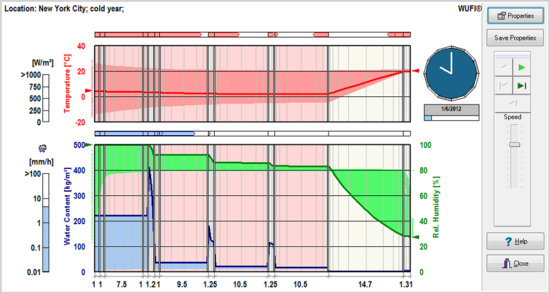Freeze-Thaw Risk: Hygrothermal Modeling
Back to Recommended Freeze-Thaw Risk Assessment Steps
There are cases where hygrothermal modeling is simply unnecessary. For example, materials testing may reveal that the brick in a wall has a very high critical saturation point – meaning that it will not fail even given high rain exposure immediately preceding freeze-thaw cycles. An experienced consultant may be able to judge the risk of degradation low in this situation – especially if the consultant has conducted a thorough site assessment.
However, in most cases risk is difficult to predict. Hygrothermal modeling can be extremely helpful in analyzing a variety of data to see how different factors might impact the overall risk level. Because simulations are based in part on assumptions and incomplete data, they should be planned and interpreted in combination with other assessments. At the end of the day, judgment is required to decide on an acceptable level of risk.
BSC uses collected material properties, local airport weather data, and wall assembly details to run simulations in WUFI. Our analysis method varies depending on the time and budget available but is always conducted by WUFI experts as part of a larger assessment process.
Next Steps
- If more data is needed to refine the hygrothermal model, gather this data. Go to: Site Load Assessment.
- If modeling in combination with other assessments yields a strong enough assessment of risk, a decision about retrofitting can be made. Go to: Repair/Retrofit, Maintain and Monitor.

